Overview of the paint market for external finishing works. Domestic and Western manufacturers, addresses and phone numbers of suppliers.
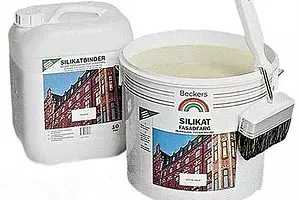
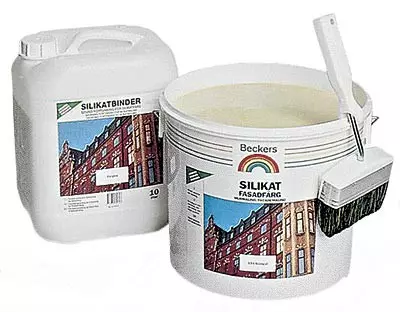
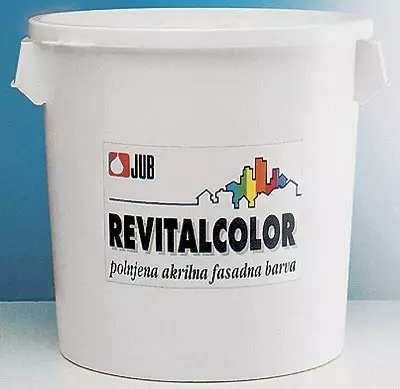
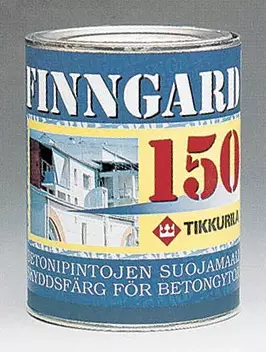
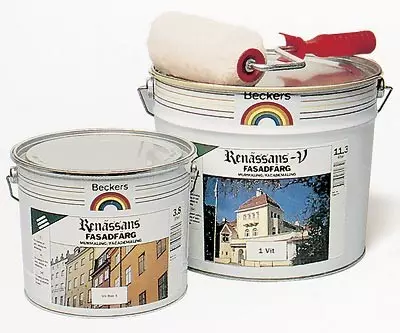
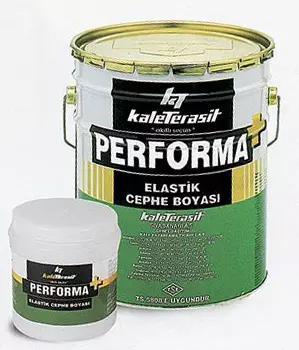
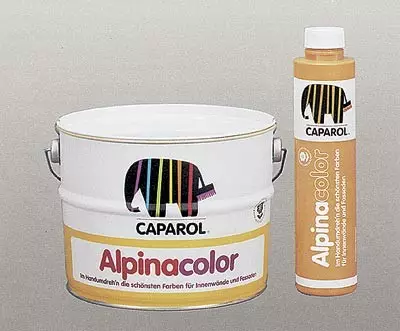
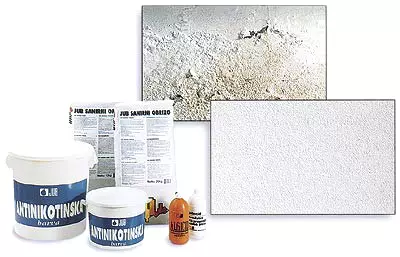
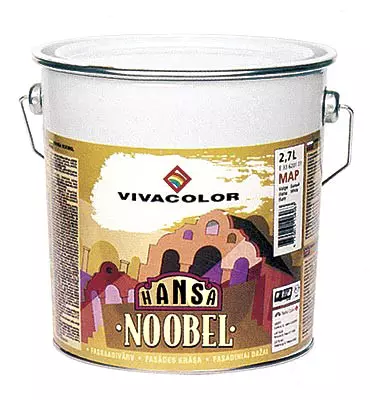
Beautiful facade pleases the eye not only the owner of the house, but also of any man passing by. In the last issue, we talked about hinged ventilated facades (article
"Hinged ventilated facades"). Now we are talking about paints for external finishing works. Their main function, in addition to creating a decorative effect, is the protection of the facade from the destructive effects of the environmentLike all finishing materials, paints for external work, or, as we will continue to call them, the facade paints differ in the possibility of using on one or another material of the base and can be divided into three groups:
for metal surfaces;
for stone surfaces;
For wooden surfaces.
This material is devoted to paints for "stone" facades. We define immediately, what we mean by the word "stone". Nobody will probably not paint the facade of polished granite or marble, but concrete walls, surfaces trimmed by various types of plasters, lined with sandstone, must be painted. So, under the term "stone" after the manufacturers of paints, we will understand exactly such both similar surfaces. Similarly, under the term "facade paints" will be implied in further paint for such "stone" facades.
The most important function of any coating is the protection of the facade from moisture penetration. The fact is that almost all mechanisms for the destruction of stone associated with physical, chemical, biological and mechanical impacts, one way or another, are based on moisture. Rain, especially with the wind, and flowing on the walls. Water is capable of caring from the surface of a brick particle, stone, building mortar and concrete. However, if this role was limited, it would be Polbie.
Like other materials, the stone is able to absorb water, which is accompanied by swelling. It is clear that all the stones absorb water in different ways: for example, a porous mortar and brick swell strongly, which you can not say about the granite, which absorbs the ability of which is very small. If water gets into a stone on the border between different construction materials, and sometimes even between particles of the same material (for example, sandstone), strong voltages occur. Somewhere the strengths of the stone lacks, and cracked. Especially strong water absorbed near the seams. They, as a rule, are made of highly sprinkled, strong absorbent, limestone or cement solutions, so there are constant damp zones around them on the facades.
The main mechanism for the destruction of the stone in the middle lane is defrosting (i.e., low temperatures). Dry stone is insensitive to frost. But there are practically no such stones in the middle lane. When the water in the pores freezes, there is an increase in its volume of approximately one-fifth and the surrounding material inevitably bursts. Thus, microcracks arise, which begin to actively recruit moisture again, and it freezes again and so on, while microcracks do not merge into ordinary, visible cracks. It turns out a vicious circle: the more water scored the stone, the stronger it cracks, the stronger it cracks, the more water he can dial. Therefore, the increase in destruction is oblivioned.
Another destroyer factor is the action of mineral salts. They can penetrate into the depths of the material with the capillars of the walls from the soil, leaching the binder of the stone. Ktomu aggressive chemicals produced in abundance in industrial areas and in the exhaust gases cars- oxides of sulfur, nitrogen and phosphorus ( "acid rain"). Even a simple, flushing effect of the front rain at elevated acidity is sharply enhanced.
Water movement ensures the transfer of salts from within a building material to the surface. The salts dissolved in it crystallize on the surface, forming a zip. Under the crust of salts, primarily gypsum, there are complex physico-chemical processes that can ultimately cause serious destruction of the surface, up to the microcarsta education "mini caves".
Mold fungi, mosses, lichen and algae, casting surface, and sometimes the volume of building materials (especially porous), are dangerous acid discharge products of their livelihoods. Especially great harm is applied by lichens, baking the surface with suction fibers. It is from all these devastating factors and must protect the facade paints. Their species are quite a lot, but three large groups can be distinguished, which differ in the material of the binder (base), which are currently used most widely: these are dispersion paints, silicate and paints based on silicone resins.
Dispersion facade paints are based on synthetic resins. They are characterized by hydrophobicity (water-repellent effect), elasticity, good mechanical strength. The unconditional advantages of these paint-ecological purity, high technological parameters and water as a diluent (alternating combustible and toxic solvents). It is for them the bulk of facade paints produced throughout the world. Dispersion paints are vapor permeable, that is, the surfaces treated with them "breathe", resistant to climatic conditions, which allows you to get a coating with excellent protective properties. Dispersion paints do not smell (except the weak smell of the residual monomer), are easily applied with brush, roller and paintopult. According to experts, water paints on an acrylate basis are recognized as the best in terms of operational properties, although usually several copolymers are part of such paint, and an optional acrylic series. But immediately need to make a reservation that with some surfaces such paints are incompatible. About this a little later.
Properties of any paint are determined by its composition. Dispersion paint is a water dispersion (the smallest, sufficiently stable droplets, reminiscent of milk) of a film former with various fillers and pigments. In addition to these components, such paint contains a number of special additives - emulsifiers, which contribute to the formation of droplets of paint in water, dispersion stabilizers, thickeners, anti-speakers, antiseptics and many other. Of course, the main component of dispersion paint is a binder, or, as they are often referred to as a film formator, since it is he who is responsible for the formation of a protective film on the surface being processed. Here are just some of the requirements for the binder: low minimum film formation temperature (less + 5C); High hardness, strength and weather resistance of the polymer; The high content of the film former (more45%) and, of course, stability during storage and stirring.
Silicate facade paints are single-component dispersion paints based on liquid potash glass containing improving organic additives. They have a large breathability, but do not have high hydrophobic indicators. Silicate paints are supplied in the finished form.
Paints based on silicone resin is the most modern paints that combine the best properties of silicate and dispersion paints. Their base is silicone compounds. These paints are also aqueous dispersion, but synthetic silicone resins are used as a binder. Silicone paints distinguishes strength, durability and beautiful breathability, at the same time painted walls are securely protected from all harmful atmospheric influences.
The main feature and complexity of the application of any paints is their compatibility with different types of surfaces to which they will be applied. There are a number of surfaces that are incompatible with certain groups of paints. In order not to make a mistake when buying, carefully examine our table, in which data are given on the most rational use of facade paints of different types of practically on all encountered types of external painted surfaces.
Many domestic manufacturers of paint products have mastered the production of facade paints on Western technologies and in Western equipment. Among them, JSC "Skim" (Moscow), which produces a wide range of facade paints (perchlorvinyl paints of the electronics of the electronics of the electronics, the acrylic paints "Acryo"; "Skim-Inteko 850"; "Skim"; water-acrylic paints VDA ; silicone KO-168 and Cial80; a wide range of silicate paints); ZAO "Oliviest" at the Moscow Plant "Lakokraska" ("Acryl-Lux"; acrylic water dispersive paint VD-AK-101). The trademark "Svyatozar" has proven itself well. Acrylic facade paint "Svyatozar-15" enjoys well-deserved popularity. The Construction "StroyKomplekt" offers the facade acrylic paint Vdak-1306, which is divided into four types: "Soil-Facade", "Standard", "Specialist" and "Professional". The first two compositions are designed for high-quality primer and surface preparation before final painting. It is only some of the Russian manufacturers of facade paints.
A number of western manufacturers of paint products unfold their production in Russia. An example of such cooperation is the Moscow enterprise "Iris Decor", the founder of which is the leading firm of Spain AKRO. The paint-produced paint for outdoor works is consistent with international standards. At the measurement to start the production of a new series of paints under the trademark Crown stated one of the largest producers of paints to the European concern Akzonobel (Holland).
But in general, Russia has no wide production of modern types of facade paints, for example, such as paints based on silicone resins and their compositions. It is for this reason that in the Russian market currently its products are a huge number of firms from Europe, America and Asia.
Producers from Scandinavia countries occupy a leading position in terms of price / quality ratio. The bright example is the Swedish company Beckers and its subsidiary VivaColor, whose paints due to the similarity of climatic conditions have proven themselves to Russian latitudes from the best side. The products of two Finnish firms Akzo Nobel Dekooy (trademark Sadolin) and Tikkurila Paintsoy (trademark Tikkurila) enjoys a sustainable demand. Next are German firms. Mefefeag (trademarks of Dufa and Flamingo), Lacufa, Reesa, Tex-Color is only the most widely represented German company manufacturers of paint products. Turkish manufacturers actively operate. Avposly then began expansion to the Russian market of firms from Slovenia. In addition to those listed, in the Russian market there are facade paints from England (Kantsern ICI, a trademark Dulux), France, USA and other countries.
And in conclusion, a few words about how to minimize the costs of maintaining the facade in perfect condition. According to Beckers specialists, the cost of the facade coating is calculated as follows: preliminary preparation of the facade - 45% of the total value of costs; salary costs 37%; Costs for finishing materials - 18%. You can make two main outputs from these numbers: first, before the painting facade should be well prepared, because it is not for nothing that all major firms produce not only the paint itself, but also a whole system of primers, fixers and impregnations that they recommend to treat the surface before Powder, and, secondly, it is better to apply only high-quality materials to cover facades. Only in this case it will last long (10-15 years), which will significantly save funds.
Compatibility of facade paints with a stainable surface
| The surface on which paint is applied | Dispersion paints | Based on silicone resin | Silicate |
|---|---|---|---|
| Lime-cement plaster | Very good | Very good | Very good |
| Lime Plaster | Not suitable | Okay | Okay |
| Mineral-based decorative plaster | Okay | Very good | Very good |
| Lime sandstone | Okay | Very good | Very good |
| Sandstone | Not suitable | Okay | Very good |
| Silicate paint, silicate plaster | Okay | Very good | Very good |
| Silicone resin paint or plaster | Okay | Very good | Not suitable |
| Lime paint. | Not suitable | Okay | Okay |
| Dispersion paint | Very good | Very good | Not suitable |
| Plasters based on synthetic resins | Very good | Very good | Not suitable |
| Concrete | Okay | Not suitable | Not suitable |
| Chopping plate | Okay | Okay | Okay |
Facade paint suppliers
| one | Beckers | Leninsky Pr-T, d. 87 | tel. 132 5883. |
| 2. | Ici Paints. | ul. Usacheva, d. 33/2, p. 2 | Tel.: 245 5970, 245 5096 |
| 3. | Alligator. | ul. Dubininskaya, 53a | Tel.: 235 2664, 235 5411 |
| four | Dufa / Flamingo. | ul. New Arbat, d. 18 | tel. 564 8470. |
| five | Lacufa. | Leninsky Pr-T, d. 95a | Tel.: 936 2122, 936 2621 |
| 6. | Tex-Color | Denisovsky per., 2 | Tel.: 267 6374, 261 5758 |
| 7. | Crown. | ul. Smolny, d. 24d | Tel.: 795 0160, 795 0163 |
| eight | Supro. | Electrode passage, d. 16 | tel. 304 6820. |
| nine | Belinka. | ul. Middle Perreylavskaya, d. 14 | tel. 280 6708. |
| 10 | Jub | ul. Middle Perreylavskaya, d. 14 | tel. 937 5761. |
| eleven | Marshal | Vostryakovsky passage, d. 10 | tel. 937 2769. |
| 12 | Dyo. | Arkhangelsky per., D. 1 | tel. 208 0220. |
| 13 | LLC VTK "Poly-R" | ul. Lobninskaya, d. 18 | tel. 485 3844. |
| fourteen | SomeFor. | Bread per., D. 8 | Tel.: 134 0367, 203 8726 |
| fifteen | Tikkurila | Coursework per., D. 9 | tel. 264 8496. |
| sixteen | Vivacolor. | Likhoborevskaya nab., D. 5a | tel. 456 2669. |
Some of the imported facade paints presented in the Russian market
| Firm | Mark paint. | Paint type | The foundation | Consumption, m2 / l | Packaging, L. |
|---|---|---|---|---|---|
| Alcro-Beckers AB, Sweden | Expo Fasadarylat. | VioMulsion | Latex-acrylic | 6-8 | 1.4; 10 |
| Renassans-v Fasadfarg | VioMulsion | Silicone emulsion | 4-6 | 3.8; 11.3. | |
| Renassans Fasadfarg. | Dispersion | Acrylic resin. | 2-4 | 0.94; 3.6; 10.8. | |
| Silikatfarg. | Silicate | Liquid potash glass | 4-5 | four; 10 | |
| Vivacolor, Sweden | Hansa Noobel | Dispersion | Acrylate, modified Silicone | 4-6 | 2.7; 9,18 |
| Hansa Silicat. | Silicate | Liquid potash glass | 4-10. | 0.9; 2.7; nine; eighteen | |
| Hansa Klassik | VioMulsion | Lime | 4-10. | 0.9; 2.7; nine; eighteen | |
| Hansa Sokkel | Dispersion | Acrylate | 4-10. | 0.9; 2.7; nine; eighteen | |
| Ici Paints, England | Dulux W / S Smooth Masonry | Dispersion, smooth | Acrylic emulsion | 14-16 | |
| Dulux W / S All Seasons Masonry | Dispersion, smooth | Acrylic copolymer | 14-16 | five | |
| Dulux W / S Textured Masonry | Dispersion, small-scale Rated | Acrylic emulsion | up to8. | five | |
| Alligator, Germany | Fassaden- FarBe3000. | Dispersion | Acrylate | 6.5 | 2.5; 5, 12.5 |
| SILIGATOR (F) | Dispersion | Acrylate | five | 5, 12.5 | |
| Phylax. | Dispersion | Acrylate | 6.6 | 12.5 | |
| Silsilan Fassadenfarbe | Silicone | Siloxane resin | 3.7-4 | 12.5 | |
| Silsilan-Universal | Silicone | Siloxane resin | 4-5.9 | 12.5 | |
| Miropan. | Silicone | Siloxane resin | 6.25. | 12.5 | |
| Miropan Streachvlies. | Silicone | Siloxane resin | 4,3. | 12.5 | |
| Kieselit Fassadenfarbe | Silicate | Liquid potash glass | 3-5 | 12.5 | |
| Dufa / Flamingo, Germany | Fassaden- Farbe90. | Dispersion | Acrylic emulsion | 5-5.5 | 2.5; five; 10; 12.5 |
| Acrylat-Fasaden- Farbe | Dispersion | Acrylate | 6.5 | 2.5; five; 10 | |
| Lacufa (Caparol), Germany | Amphibolin-2000. | Pure acrylate (according to the company's nomenclature) | Acrylate | eight | 2.5; five; 12.5 |
| CAP-ELAST UNITOP | Pure acrylate (minor company) | Acrylate | four | 12.5 | |
| Muresko-Plus. | Dispersion | Mineral with Siloxan | five | 2.5: 5; 12.5 | |
| Amphisil. | Silicate dispersion | Liquid potash glass | 5-5.5 | 12.5 | |
| Caparol Acryl-Fassadenweiss | Dispersion | Acrylate based synthetic resins | five | five; 12.5 | |
| DUPAROL (W) | Polymer | Polymeric resins | four | 12.5 | |
| Amphisilan (w) | Silicone | Siloxane resin | 5-6.5 | 12.5 | |
| Am Tol Silikat-Fassadenfarbe | Silicate | Liquid potash glass with quartz | 5-6.5 | five; 12.5 | |
| Sylitol Reinsilikat-Farbe | Silicate | Liquid potash glass | four | 12.5 | |
| Sylitol-egalisationfarbe | Silicate dispersion | Modified Liquid Potash Glass | 5-6.5 | 12.5 | |
| Sylitol Compact. | Silicate | Liquid potash glass, enhanced by siloxane | 4-5 | 12.5 | |
| Lacufa (Diamant) | NEU ACRYL-FASSADENWEISS | Dispersion | Acrylic | 5-6 | 10 |
| Reesa, Germany | Uni-Fassadenfarbe | Dispersion | Acrylic emulsion | 6. | five; 12.5 |
| Reesacryl. | Dispersion | Acrylic emulsion | 7. | 12.5 | |
| Reesolan. | Synthetic | Synthetic resins | 5.5 | 12.5 | |
| Reesa-Siloxan | Silicone | Silicone emulsion | five | 12.5 | |
| Tex-Color, Germany | TEX-EGALIZATIONSFARBE. | Dispersion | Acrylic emulsion | four | fifteen |
| Tex-Renovierfarbe | Dispersion | Acrylic dispersion | five | fifteen | |
| Tex-Sil. | Dispersion | Acrylic emulsion | five | fifteen | |
| Silikat-Fassadenfarbe | Dispersion silicate | Liquid potash glass | five | fifteen | |
| Siloxan-Fassadenfarbe | Dispersion | Siloxanova | five | fifteen | |
| "Irisdecor", Russia | "Iris Decor" | Dispersion | Veva-acetate copolymers | 110-170 g / m2 / on the layer | five; fifteen; 25; 60. |
| Zao Akzo Nobel Dekor, Russia | Crown (facade) | Silicone | Silan-Syloksanova | 5-6 | five; 10 |
| OOO Supro, Russia | SUPRO ACRYL LATEX EXTERIOR | Dispersion | Acrylic emulsion | 8-10 | 2.5; five; 10 |
| SUPRO ACRYL LATEX EXTERIOR EXTRA | Dispersion | Acrylic emulsion | 10 | 2.5; five; 10 | |
| SUPRO COLEUR LATEX EXTERIOR | Dispersion | Acrylic emulsion | 8-10 | 2.5; five; 10 | |
| SUPRO SUPER ACRYL | Dispersion | Acrylic emulsion | nine | 2.5; five; 10 | |
| SUPRO COLEUR SUPER ACRYL | Dispersion | Acrylic emulsion | nine | 2.5; five; 10 | |
| BELINKA, Slovenia | Opal kolor. | Dispersion | Acrylate | 10-11m2 / kg | 16 kg |
| Jub, Slovenia | Acrylcolor. | Dispersion | Acrylic emulsion | 3.5 | 2.5; five; 12.5 |
| Acrylcolor Relief | Dispersion | Acrylic emulsion | 1,2 | 2.5; five; 12.5 | |
| RevitalColor AG | Dispersion | Acrylic emulsion | 2. | 2.5; five; 12.5 | |
| Takril. | Dispersion | Acrylic emulsion | 3.5 | 2.5; five; 10 | |
| Jubosil F. | Silicone | Silicone emulsion | 3. | 2.5; five; 10 | |
| Jubosil FX. | Silicate | Liquid potash glass | 3. | 2.5; five; 10 | |
| RevitalColor Si. | Silicate | Liquid potash glass | 2. | 2.5; five; 10 | |
| Helios, Slovenia | Spectra | Dispersion | Acrylic emulsion | 10 | There is no data |
| Martin Senour Paint, USA | Great Life. | Latex | Not decrypted | 10 | 0.94; 3.78; 18.9 |
| Platinum | Latex | Not decrypted | 10 | ||
| Betek, Turkey | Beteksilan. | Silicone | Silicone emulsion | 6-10. | 3.75; fifteen |
| Beteksilan Texture. | Silicone | Silicone emulsion | 0.8-2m2 / kg | 25 kg | |
| Betakril. | Dispersion | Acrylic emulsion | 7.5-10. | 2.5; 3.75; fifteen | |
| Betakril Texture. | Dispersion | Acrylic emulsion | 0.8-2m2 / kg | 25kg | |
| Betekdur. | Dispersion | Acrylic emulsion | 7.5-10. | 3.75; fifteen | |
| DYO, Turkey | Dyosil | Silicone | Silicone emulsion | 8-12. | 17.5 |
| Dyotex. | Dispersion | Acrylic emulsion | five | 2.5; 17.5 | |
| Marshal, Turkey | "Acricor" | Dispersion | Acrylic emulsion | 12 | 2.5; 7.5; fifteen |
| LLC VTK, Poly-R, Russia | Poly-R (facade) | Dispersion | Acrylic emulsion | 6.5 | five; 10 |
| SomeFor, France | Alpafacade | on solvent | Resin brand PLIOLITE. | eight | 10 |
| "Facade Acryl" | VioMulsion | Acrylic emulsion | 5-7 | 10 | |
| "Alpafasad Polyacryl" | VioMulsion | Acrylic emulsion | nine | 10 | |
| Akzo Nobel Dekooy, Finland | Sadolin Lukko. | Dispersion | Acrylic emulsion | 3-6 | 10 |
| Tikkurila Paintsoy, Finland | Kivitex (facade) | Dispersion | Acrylic emulsion | 3-5 | 3; 10; twenty |
| Kivitex (Silicate) | Silicate | Liquid potash glass | 4-10. | 0.9; 2.7; nine; eighteen | |
| Kivisil. | Silicone | Silicone emulsion | 4-10. | 0.9; 2.7; nine; eighteen | |
| Yuki. | VioMulsion | Latex-acrylic | 4-10. | 0.9; 2.7; nine; eighteen | |
| Yuha. | Dispersion | Acrylic emulsion | 4-10. | 0.9; 2.7; nine; eighteen | |
| Novasil. | Dispersion | Acrylate, modified Silicone | 4-10. | 0.9; 2.7; nine; eighteen | |
| Mader, Hungary | Dekton-EX. | Dispersion | Acrylic emulsion | There is no data | 25 kg |
